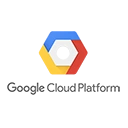Introduction
Google Cloud Scheduler is a fully managed, enterprise-grade cron job scheduler that allows you to automate the execution of tasks and jobs at specified intervals. With Cloud Scheduler, you can trigger actions and workflows across your Google Cloud environment, making it an essential tool for automation and orchestration of tasks.
Key Concepts
Before we explore Google Cloud Scheduler in-depth, it's essential to understand some key concepts:
- Cron Job: A time-based job scheduler in Unix-like operating systems, specified in a "cron" format (e.g., "* * * * *").
- Job Payload: The task or action to be executed, typically in the form of an HTTP request, Pub/Sub message, or App Engine task.
- Job Schedule: The time and frequency at which a job is executed, defined using the cron syntax or an alternative such as a single-time execution or an interval-based schedule.
Using Google Cloud Scheduler
Let's walk through the process of using Google Cloud Scheduler to automate jobs and tasks:
1. Create a Scheduler Job
Define the job you want to automate. This includes specifying the job payload, schedule, and target, which could be an HTTP endpoint, Pub/Sub topic, or an App Engine task.
gcloud scheduler jobs create http my-job --schedule="0 * * * *" --uri=https://example.com/task
2. Set Up Authentication
Ensure that the target endpoint (e.g., an HTTP request) is properly authenticated and authorized to perform the job's action.
# Implement authentication in your job's code
3. Monitor and Manage Jobs
Use the Google Cloud Console to monitor, manage, and review the execution history of your scheduled jobs.
# Navigate to the Google Cloud Console and access Cloud Scheduler
Conclusion
Google Cloud Scheduler simplifies job automation by allowing you to schedule tasks and actions within your Google Cloud environment. It provides a reliable and scalable solution for time-based job execution, making it an essential tool for automating recurring tasks, data processing, and more.
For comprehensive documentation and advanced configurations, refer to the Google Cloud Scheduler documentation.

